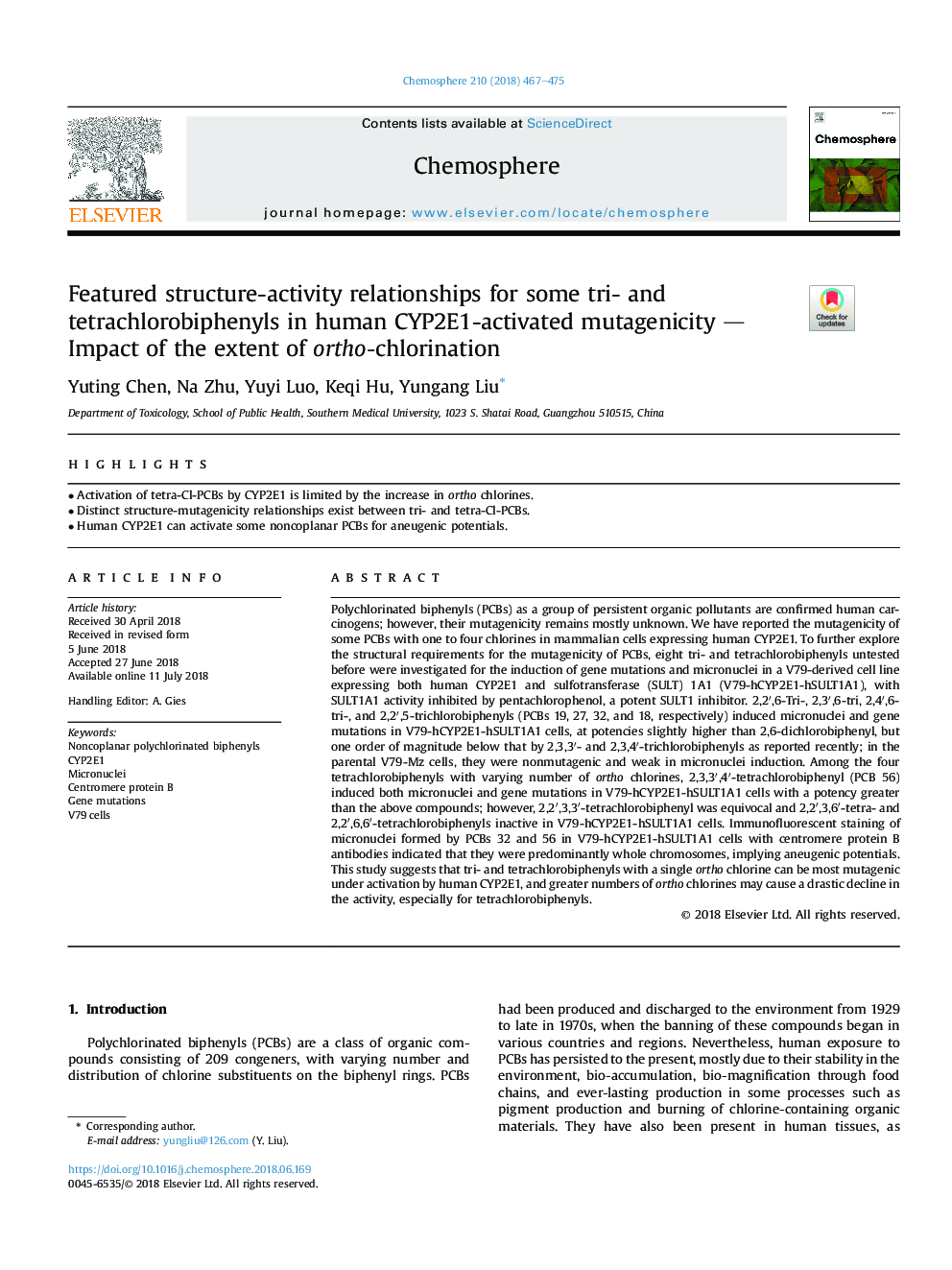| کد مقاله | کد نشریه | سال انتشار | مقاله انگلیسی | نسخه تمام متن |
|---|---|---|---|---|
| 8850448 | 1618761 | 2018 | 9 صفحه PDF | دانلود رایگان |
عنوان انگلیسی مقاله ISI
Featured structure-activity relationships for some tri- and tetrachlorobiphenyls in human CYP2E1-activated mutagenicity - Impact of the extent of ortho-chlorination
دانلود مقاله + سفارش ترجمه
دانلود مقاله ISI انگلیسی
رایگان برای ایرانیان
موضوعات مرتبط
علوم زیستی و بیوفناوری
علوم محیط زیست
شیمی زیست محیطی
پیش نمایش صفحه اول مقاله

چکیده انگلیسی
Polychlorinated biphenyls (PCBs) as a group of persistent organic pollutants are confirmed human carcinogens; however, their mutagenicity remains mostly unknown. We have reported the mutagenicity of some PCBs with one to four chlorines in mammalian cells expressing human CYP2E1. To further explore the structural requirements for the mutagenicity of PCBs, eight tri- and tetrachlorobiphenyls untested before were investigated for the induction of gene mutations and micronuclei in a V79-derived cell line expressing both human CYP2E1 and sulfotransferase (SULT) 1A1 (V79-hCYP2E1-hSULT1A1), with SULT1A1 activity inhibited by pentachlorophenol, a potent SULT1 inhibitor. 2,2â²,6-Tri-, 2,3â²,6-tri, 2,4â²,6-tri-, and 2,2â²,5-trichlorobiphenyls (PCBs 19, 27, 32, and 18, respectively) induced micronuclei and gene mutations in V79-hCYP2E1-hSULT1A1 cells, at potencies slightly higher than 2,6-dichlorobiphenyl, but one order of magnitude below that by 2,3,3â²- and 2,3,4â²-trichlorobiphenyls as reported recently; in the parental V79-Mz cells, they were nonmutagenic and weak in micronuclei induction. Among the four tetrachlorobiphenyls with varying number of ortho chlorines, 2,3,3â²,4â²-tetrachlorobiphenyl (PCB 56) induced both micronuclei and gene mutations in V79-hCYP2E1-hSULT1A1 cells with a potency greater than the above compounds; however, 2,2â²,3,3â²-tetrachlorobiphenyl was equivocal and 2,2â²,3,6â²-tetra- and 2,2â²,6,6â²-tetrachlorobiphenyls inactive in V79-hCYP2E1-hSULT1A1 cells. Immunofluorescent staining of micronuclei formed by PCBs 32 and 56 in V79-hCYP2E1-hSULT1A1 cells with centromere protein B antibodies indicated that they were predominantly whole chromosomes, implying aneugenic potentials. This study suggests that tri- and tetrachlorobiphenyls with a single ortho chlorine can be most mutagenic under activation by human CYP2E1, and greater numbers of ortho chlorines may cause a drastic decline in the activity, especially for tetrachlorobiphenyls.
ناشر
Database: Elsevier - ScienceDirect (ساینس دایرکت)
Journal: Chemosphere - Volume 210, November 2018, Pages 467-475
Journal: Chemosphere - Volume 210, November 2018, Pages 467-475
نویسندگان
Yuting Chen, Na Zhu, Yuyi Luo, Keqi Hu, Yungang Liu,